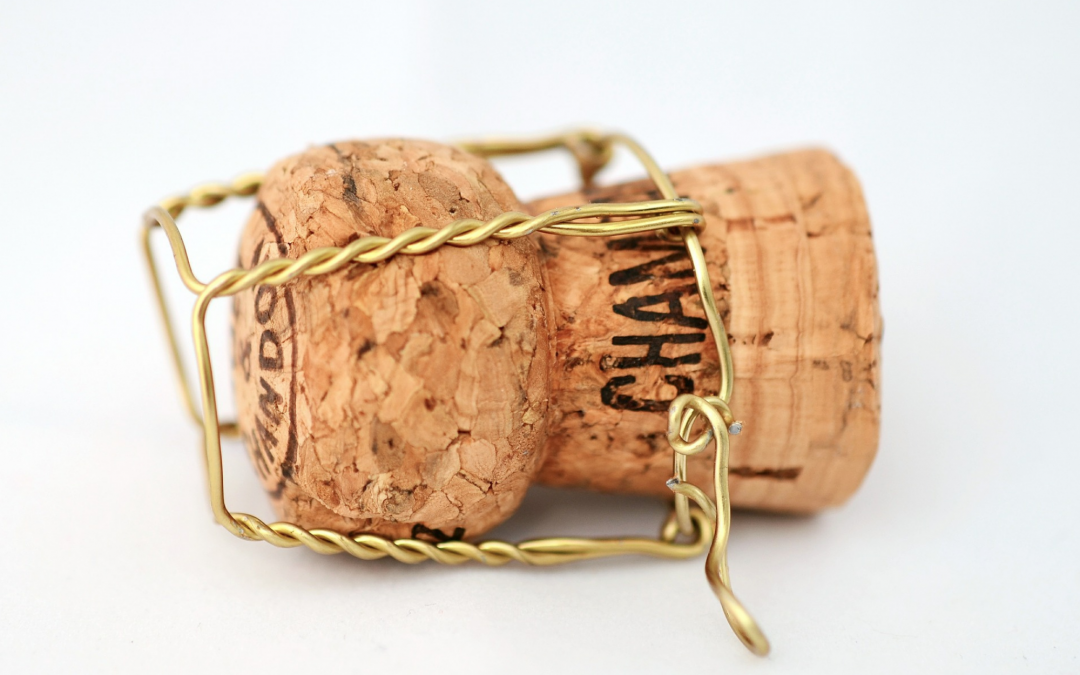Given we’re located in the King Valley, but we don’t make Prosecco, this little explainer might help clarify a few points about how these wines are different. It’s worth noting here that one is not better than the other – that is something that only the drinker can decide, not the producer.
Grape variety
Our wines are made in the French style – known as méthode champenoise , méthode traditionnelle (MT) or, just simply ‘bottle fermented’. In the French tradition, we use chardonnay, pinot noir and pinot meunier as our base wine blending components – all of which have super high acid and suit our very cold climate. In this instance, chardonnay contributes lightness, finesse and length while the pinot’s tend to give more depth of flavour, red fruit flavours, a more generous and textured mouthfeel and sometimes the ‘vinous’ character. They are more often than not blended together to create a harmonious balance.
Prosecco is it’s own grape, officially called Glera, with its own flavours – which tend to sit in the delightful floral and citrus end of things. It’s perfect in the King Valley because it’s quite a bit warmer than Whitlands.
The fermentation
All wine produces carbon dioxide as it ferments, so for it to become sparkling, the carbon dioxide created during fermentation must be forced into the wine under pressure. First though, you have to start with a dry base wine that doesn’t have any fizz yet.
With the traditional bottle fermented method, we referment base wines in the bottle which traps the gas under pressure, creating the bubbles. So the bottle the wine is sold in, is the bottle it was fermented in. Fun!
Prosecco is mostly made on much larger scale, where the base wine is refermented in pressurised tanks, in a process called ‘charmat method’ – it is then bottled under pressure. This is where the economies of scale are handy – keeping the prices lower than bottle fermented wines.
What’s all this talk about yeast?
Wines made in the traditional method have yeast remaining in the bottle after fermentation anywhere from 18 – 60 + months. This adds yeasty flavours to the wine which might remind you of pastry, brioche, toasted nuts or dough.
Prosecco tends not to be aged on lees, meaning that in the finished wine, the flavours will come from the grapes only. There are exceptions to this though!
Hold on, is there yeast in my fizz?
Nope – but it can be quite an effort to remove it. With the charmat (tank) made wines, removing it is a simple filtering process before bottling. Bottle-fermented wines are trickier: the bottle must be turned upside down so all of the dead yeast settles in the bottle’s neck. The neck is then snap-frozen and opened – and voila, out pops the little plug of yeast solids. This process is called ‘disgorgement’. To replace the volume lost through disgorgement, a little more wine is added to each bottle. This wine contains a specific sugar-to-acid ratio to correct any imbalance in the sparkling wine; it is called a ‘dosage’. Wines that have nothing added to them at disgorging are often labelled ‘zero dosage’. Finally, the bottle is sealed again, ready for packaging.
Vintage V Non Vintage
Both Prosecco and the traditional method (MT) wines can be vintage or non-vintage. Non-Vintage or NV means that the final wine is a blend of wines from different year. Non-vintage wines are generally more consistent and cheaper than vintage wines. Vintage wine will have the year of production on the label – this is generally regarded as the pinnacle of quality and price.
Dryness V Sweetness
Sweetness in all sparkling wine is commonplace – most Prosecco wines tend to be 10g – 25g per litre sugar. This is known in the industry as ‘off-dry’, but it still might not necessarily taste sweet because the actual taste depends on how the acid in the wine interacts with the sugar. In the MT wines, if you see a label with ‘brut’ on it, this means it’s ‘dry’ by French standards – which is less than 12g per litre. Other than on our Cute Brut (which is more of a brand name), we don’t use the french term on our labels but we use very little, if any sugar, normally around 0-5g/litre. This is a stylistic decision unique to each wine we produce. It’s worth mentioning that the higher the sugar content, the higher the sulphur dioxide level must be to prevent spoilage – so prosecco is often very high in SO2.
Styles by Flavour
If you like your fizz fresh, energetic and fruity you can’t go past Prosecco. You can buy the locally made wines or you can buy Italian made Prosecco also. They vary a bit on the sweetness – but in general are super delicious, affordable and have a superior crowd pleasing ability. Try anything from King Valley – Dalzotto, Brown Brothers, Sam Miranda, Chrismont & Redbank all make excellent examples.
The MT wines normally retail from $25 upwards. Typically made from Chardonnay, Pinot Noir & Meunier blended from different years (NV), these are generally great value. They’re super reliable as most are made by big producers (like Jansz, Brown Brothers, Domaine Chandon, Arras etc) and they have a bit more flavour going on than Prosecco mostly due to the yeast ageing. Depending on the blend they can be super light, fine, floral & citrus (more percentage Chardonnay) or really quite rich and voluptuous (more percentage of Pinot Noir and longer ageing).
Are flutes still a thing?
Yes. And no. Flutes make you look sexy and elegant, and they help the bubbles to last longer – both very important factors! If you want to get a sense of the full array of flavours in the wine though, you’re best to use a white wine glass. Yes, it will flatten the wine a little, but that means you’ll have more of a chance to get a truer insight into the character of the wine – especially the aromas, which are difficult to recognise out of a flute. If you’re not convinced, pour a taste in a wine glass, and a taste in a flute and decide for yourself.
Happy drinking!

